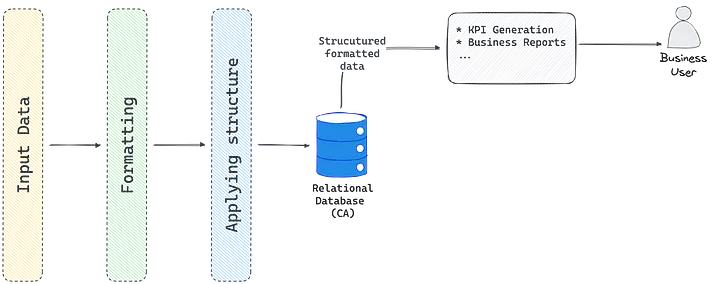Data Lake vs. Data Warehouse
Data lakes offer flexibility with raw data; data warehouses provide structured data for quick insights. Each has its own benefits and trade-offs.
Join the DZone community and get the full member experience.
Join For FreeIn the landscape of data management and analytics, data lakes and data warehouses stand out as two foundational technologies. They serve distinct purposes and offer different advantages, each fitting various needs of organizations in handling big data. Understanding their differences, benefits, and trade-offs is essential for making informed decisions about which to use for specific data storage, management, and analysis needs.
Data Lake
A data lake is a centralized repository that allows for the storage of structured, semi-structured, and unstructured data at any scale. It can store data in its raw form without needing to first structure the data, making it highly flexible and scalable.
Data lakes adopt a “schema-on-read” approach, meaning the data’s structure is not defined until the data is queried. This allows for storing vast amounts of raw, unstructured data from various sources, offering flexibility and adaptability for data analysis and discovery tasks.

Benefits
- Flexibility in data types and structures: Data lakes can store data in various formats, including logs, XML, JSON, and more. This versatility makes it ideal for organizations dealing with a wide array of data sources.
- Scalability and cost-effectiveness: With the ability to store vast amounts of data, data lakes leverage the scalability of cloud storage solutions, which can be more cost-effective than traditional data storage options.
- Advanced analytics and machine learning: Data lakes support big data analytics, machine learning models, and real-time analytics, providing deep insights and enabling data-driven decision-making.
Trade-Offs
- Complex data management: Without proper governance and management, data lakes can become “data swamps,” where unorganized and outdated data makes it challenging to find and utilize information.
- Security and compliance risks: Managing access and ensuring security for a wide variety of data types can be complex, requiring sophisticated security measures to protect sensitive information.
Data Warehouse
A data warehouse is a system used for reporting and data analysis, acting as a repository of structured data extracted from various sources. The data is processed, transformed, and loaded into a structured format, making it suitable for querying and analysis.
Data warehouses use a “schema-on-write” methodology, where data is cleansed, structured, and defined before storage. This ensures that the data is ready for querying and analysis, facilitating fast and reliable reporting but requiring upfront data modeling efforts.

Benefits
- Structured for easy access: Data is organized into schemas and optimized for SQL queries, making it easier for users to perform complex analyses and generate reports.
- High performance: Data warehouses are designed to handle complex queries efficiently. They support large volumes of data and numerous simultaneous queries, providing quick and reliable access to insights.
- Historical data analysis: They excel in storing historical data, enabling trend analysis over time, and helping in forecasting and decision-making.
- Data integrity and quality: The process of transforming data into a structured format ensures consistency, accuracy, and reliability of the data stored in data warehouses.
Trade-Offs
- Constraints on data types: Data warehouses are less adaptable to unstructured data, requiring data to be converted into a structured format before it can be stored and analyzed.
- Cost and complexity in scaling: Traditional data warehouses can be expensive and complex to scale, especially as data volume grows.
- To understand this point, you can read my paper on the CAP theorem, which explains how databases are classified and their inherent limitations: Navigating the CAP Theorem: In search of the perfect database
- Longer setup and integration time: Setting up a data warehouse and integrating various data sources can be time-consuming, requiring significant upfront investment in planning and development.
Conclusion
Both data lakes and data warehouses offer valuable capabilities for data storage, management, and analysis. The choice between them depends on the specific needs of an organization, such as the types of data being dealt with, the intended use of the data, and the desired balance between flexibility and structure.
For organizations prioritizing flexibility in handling various data types and formats, and focusing on advanced analytics, a data lake might be the more suitable option.
On the other hand, for those requiring fast, reliable access to structured data for reporting and historical analysis, a data warehouse could be the better choice.
In many cases, organizations find value in utilizing both technologies in a complementary manner, leveraging the strengths of each to meet their comprehensive data management and analysis needs. This hybrid approach ensures that businesses can harness the power of their data effectively, driving insights and decisions that propel them forward.
Published at DZone with permission of Pier-Jean MALANDRINO. See the original article here.
Opinions expressed by DZone contributors are their own.

Comments